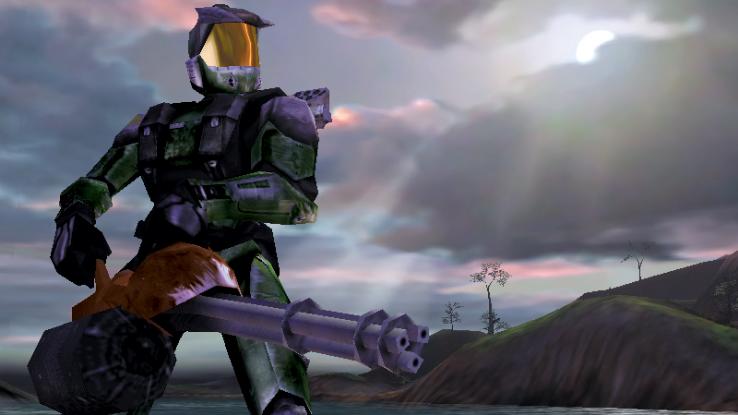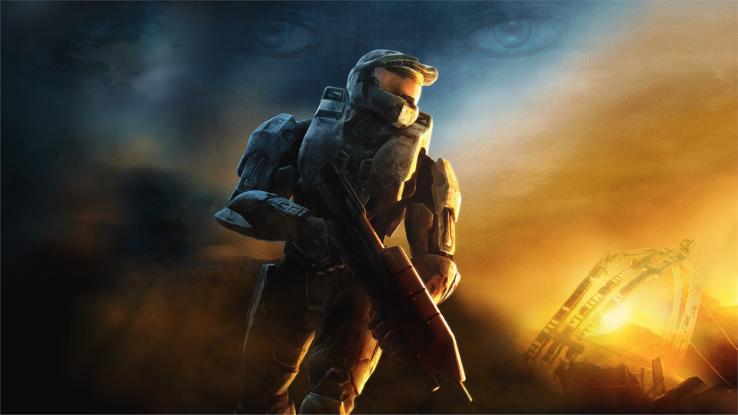
Every gaming console has its mascots; Mario, Link and Pikachu are the spokesmen for Nintendo while Crash Bandicoot, Lara Croft, Nathan Drake and Kratos have all been ambassadors for Sony. But there’s only ever been one true mascot for Microsoft’s Xbox consoles.
A warrior clad head to toe in emerald armor. A silent soldier who’d prefer to let his guns do the talking for him. We’re referring to John-117, better known as Master Chief. Simply regarding him as a mascot would be a great disservice to the character, his creators and his fans.
The Chief is a titan of the gaming industry, shattering sales records and raising the bar for first-person shooters (FPS) with each installment of the original Halo trilogy. However, his greatest achievement may be his impact on the gaming community.
Countless cosplayers and numerous YouTubers owe their careers to Master Chief. His fans have also helped the Bungie Foundation complete a myriad of charity initiatives. Master Chief is a bonafide pop culture icon, and he turns 20 years old today. Let’s celebrate by looking back at the Halo franchise’s decorated legacy.
“We’re Just Getting Started”: The Origins of Halo
Stop us if this sounds familiar: A cybernetic supersoldier battles aliens in a futuristic, sci-fi setting. That’s the basic premise of the Halo franchise, but it also describes the Marathon Trilogy. The Bungie Software Products Corporation developed Marathon, Marathon 2: Durandal and Marathon Infinity for the Apple Macintosh in the mid-1990s.
Company founders Alex Seropian and Jason Jones weren’t sure if they wanted to create another Marathon game at that point, but they were deeply interested in developing a new title that expanded on the success of their previous projects.

Jones tinkered with a game engine that could support large-scale tank combat and robust gunplay. His efforts led to multiple prototypes, a meeting with Steve Jobs, and several demos at the Macworld Conference & Expo and the Electronic Entertainment Expo (E3) in 1999.
Microsoft Game Studios ultimately acquired Bungie (which officially became Bungie Studios) on June 19, 2000. Bungie’s “killer app” had many names up until this point (including Blam! and The Santa Machine). Artist Paul Russel eventually pitched the name Halo, though the now-iconic “Combat Evolved” subtitle was added at the insistence of Microsoft’s marketing teams.
“Earth Will Never Be the Same”: Halo’s Media Influence
Halo: Combat Evolved launched on November 15, 2001, exclusively for the Xbox. Surprisingly, the game wasn’t an overnight success upon release. However, a flood (pun most certainly intended) of rave reviews and first-hand testimonies gradually turned the tide. By July 2003, over 3 million units of Halo: Combat Evolved had sold across the globe.
Bungie later released Halo 2 on November 9, 2004. Halo had become a bonafide phenomenon by this point, so the anticipation for its sequel was astronomical. Mainstream media outlets like CBS and CNN extensively covered the game on launch day, applauding Bungie and Microsoft for selling 2.4 million units within the first 24 hours of Halo 2’s release.

Halo 2’s monumental success baffled the gaming industry. Developers from every corner of Earth tried to emulate Bungie’s accomplishments. Sci-fi shooters with power-armored protagonists cropped up by the dozen as Bungie’s competitors toiled away on “Halo Killers.”
Then, September 23, 2007, rolled in. Halo 3 was released for the Xbox 360 — once again earning universal acclaim and demolishing sales records on launch day. Halo cemented itself as a landmark FPS franchise. However, gargantuan sales numbers and critical adoration aren’t the only reasons for the success of this series.
“Believe”: Halo’s Cultural Impact
Halo’s passionate fanbase has always been crucial to the franchise’s success. So-called “Halo Killers” could emulate the look, feel and production values of Bungie’s iconic FPS, but they lacked die-hard fans who would attend midnight releases come rain, sleet or snow.
Players adored the Halo franchise for a myriad of reasons; the original trilogy introduced dozens of now-iconic characters like Master Chief, Sergeant Johnson, the Arbiter, and Cortana (the namesake of Windows’ virtual assistant). The Halo franchise is also famous for its cinematic storyline as well as Martin O’Donnell and Michael Salvatori’s hauntingly beautiful soundtracks.
Lastly, the Halo franchise featured incredibly immersive gameplay. Each installment boasts extremely realistic physics and vehicular combat. Halo 2 introduced the ability to hijack vehicles and dual wield weapons while Halo 3 let players create their own maps and custom game modes. Multiplayer was integral to all three original Halo titles, connecting millions of gamers from different cities, states, and even countries.

Halo fans span multiple generations and come from every walk of life imaginable. Some folks were soda-chugging, pizza-scarfing college students when Combat Evolved was released. Others were in grade -school when Halo 2 made history. But all of them were, and still are, united by their love for this franchise.
We’d be remiss not to mention Red vs. Blue, one of the oldest and longest-running web shows on the internet, or the late Monty Oum. Halo‘s popularity also correlates with the rise of esports and major league gaming. Lastly, the Halo community has donated hundreds of thousands of dollars to charity initiatives like GlobalGiving’s Coronavirus Relief Fund.
We could wax poetic about Halo‘s pop cultural significance for ages. Or, you could experience it firsthand. Count how many Master Chief cosplayers you see at the next E3. See how much engagement the “Halo Theme” still garners after all these years. Why is Halo still relevant at age 20? There are millions of people who can provide an answer.
“Forward Unto Dawn”: The Future of the Franchise
Bungie became an independent studio in 2007. It released
Halo: Reach
in 2010, then officially departed from Microsoft and the
Halo
franchise. 343 Industries (the developers of
Halo: Combat Evolved Anniversary
) has carried on in Bungie’s stead since March 31, 2012.

343 Industries developed several titles between 2012 and 2018, including Halo 4, Halo: The Master Chief Collection, Halo Wars 2 and Halo 5: Guardians. Halo Infinite will be the latest installment in this venerated franchise. Fans can saddle up with Master Chief once again on December 8, 2021.
Time will tell if Halo Infinite resonates with players and sets new records as its predecessors did. However, 343 Industries seems committed to honoring Halo‘s storied legacy. We wish the studio the best of luck with the franchise. And “luck” is something no Halo fan takes for granted.

 Caleb Bailey
Caleb Bailey




